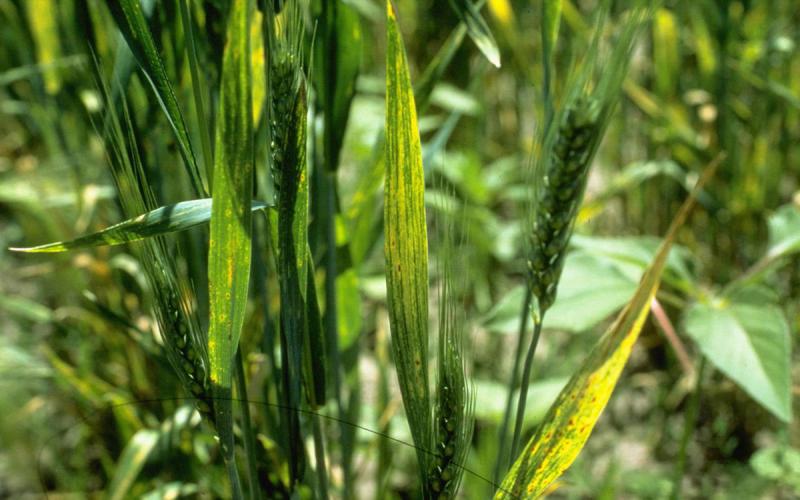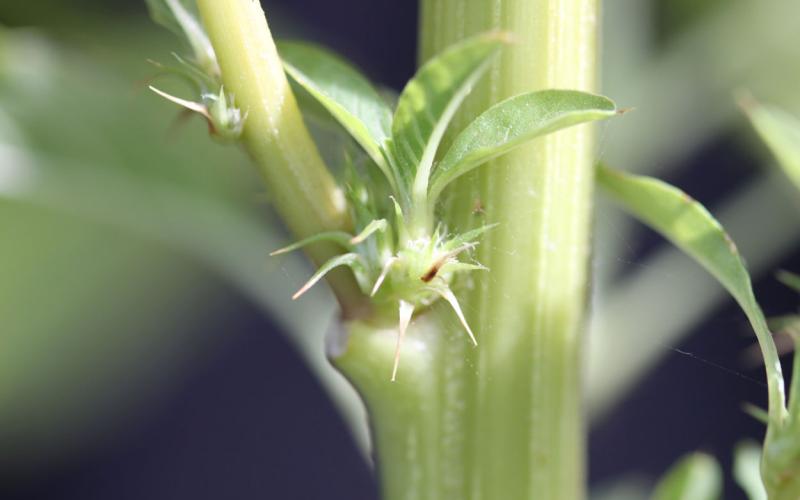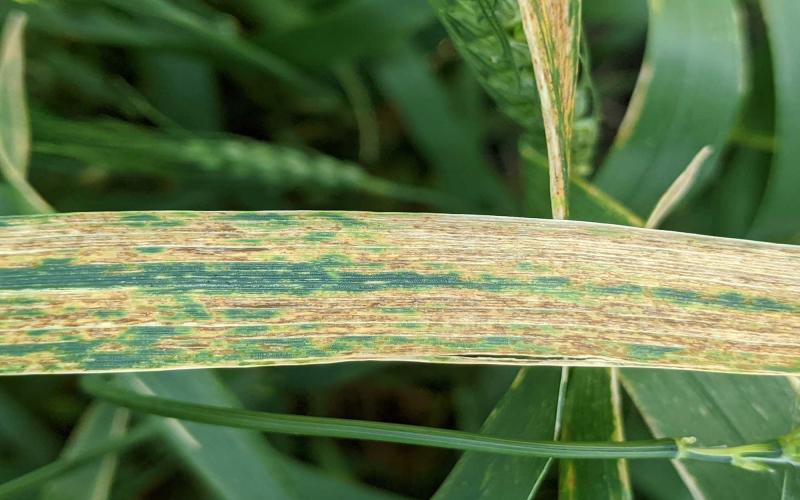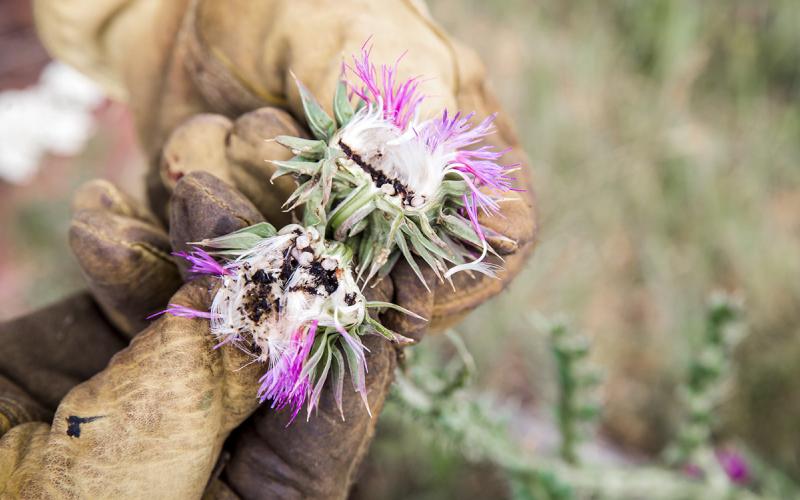
Written collaboratively by Eric Jones, Adam Varenhorst, Jill Alms, David Vos, Madalyn Shires, and Philip Rozeboom.
Wheat streak mosaic virus (Figure 1) is a disease that is carried by wheat curl mite; often referred to as the green bridge. Wheat curl mite uses volunteer wheat and grass weeds as secondary hosts to infest recently planted winter wheat crops. Therefore, effective management of these plants before winter wheat planting is critical. Management of volunteer wheat and grass weeds is most effective with glyphosate (i.e., Roundup) as these species are very susceptible and there is no residual activity to injure subsequently planted winter wheat. While glyphosate is effective on volunteer wheat and grass weeds, it is not effective on kochia due to widespread resistance. Herbicides that are effective on kochia are not effective on grass species. Therefore, two herbicide applications are likely necessary. Since the grass species are a host for wheat streak mosaic virus and the wheat curl mite, glyphosate should be applied first.
Two weeks later, the herbicide application for kochia can occur. Paraquat (i.e., Gramoxone), dicamba (i.e., Banvel, Clarity) and saflufenacil (i.e., Sharpen) are commonly applied in these situations. Due to concerns of resistant kochia (including resistance to Dicamba and Saflufenacil herbicides), farmers should strongly consider paraquat mixed with another herbicide (atrazine [i.e., Aatrex] or metribuzin [i.e., Tricor]) to manage kochia and reduce selection pressure on resistant plants. Applying paraquat with atrazine/metribuzin increases the activity of paraquat while providing some soil residual activity. Consider the subsequent crop before applying a tank mix partner as atrazine can be applied ahead of corn and sorghum while there is much more flexibility with metribuzin.
Refer to the most-recent South Dakota Pest Management Guide: Wheat and the specific pesticide labels before application.


